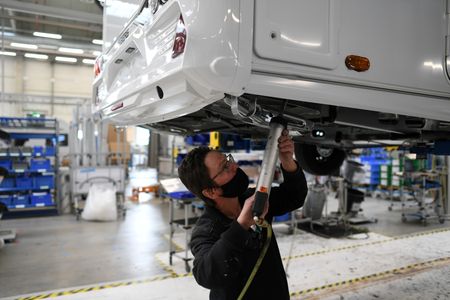BRUSSELS (Reuters) -Euro zone industrial production rose much more than expected in September, and output for August was revised upwards too, data showed on Monday, although economists said that may be partly due to manufacturers frontloading production before energy-related disruptions this winter.
The stronger than expected industrial production helps explain why the euro zone still managed to grow 0.2% quarter-on-quarter in the July-September period, despite strong headwinds from soaring energy prices and rising interest rates.
The European Union’s statistics office Eurostat said industrial output in the 19 countries sharing the euro rose 0.9% month-on-month in September for a 4.9% year-on-year gain.
Economists polled by Reuters had expected a 0.3% monthly rise and a 2.8% annual increase.
The data for August was revised upwards to a rise of 2.0% on the month and 2.8% year-on-year from 1.5% monthly and 2.5% year-on-year previously.
“Back-to-back increases in production paint a misleading picture of prospects for the eurozone industrial sector,” said Ken Wattret, economist at S&P Global Market Intelligence.
“Possible explanations for the current divergence of surveys and hard data include production having been brought forward in anticipation of energy-related disruptions during the winter – increasing the likelihood of sharp declines in production going forward,” he said.
“The most forward-looking aspects of our PMIs, including new orders and future production expectations, remain indicative of recession,” he said.
The European Commission expects the euro zone economy will contract in the last three months of the 2022 and in the first quarter of 2023.
(Reporting by Jan Strupczewski; Editing by Susan Fenton)

